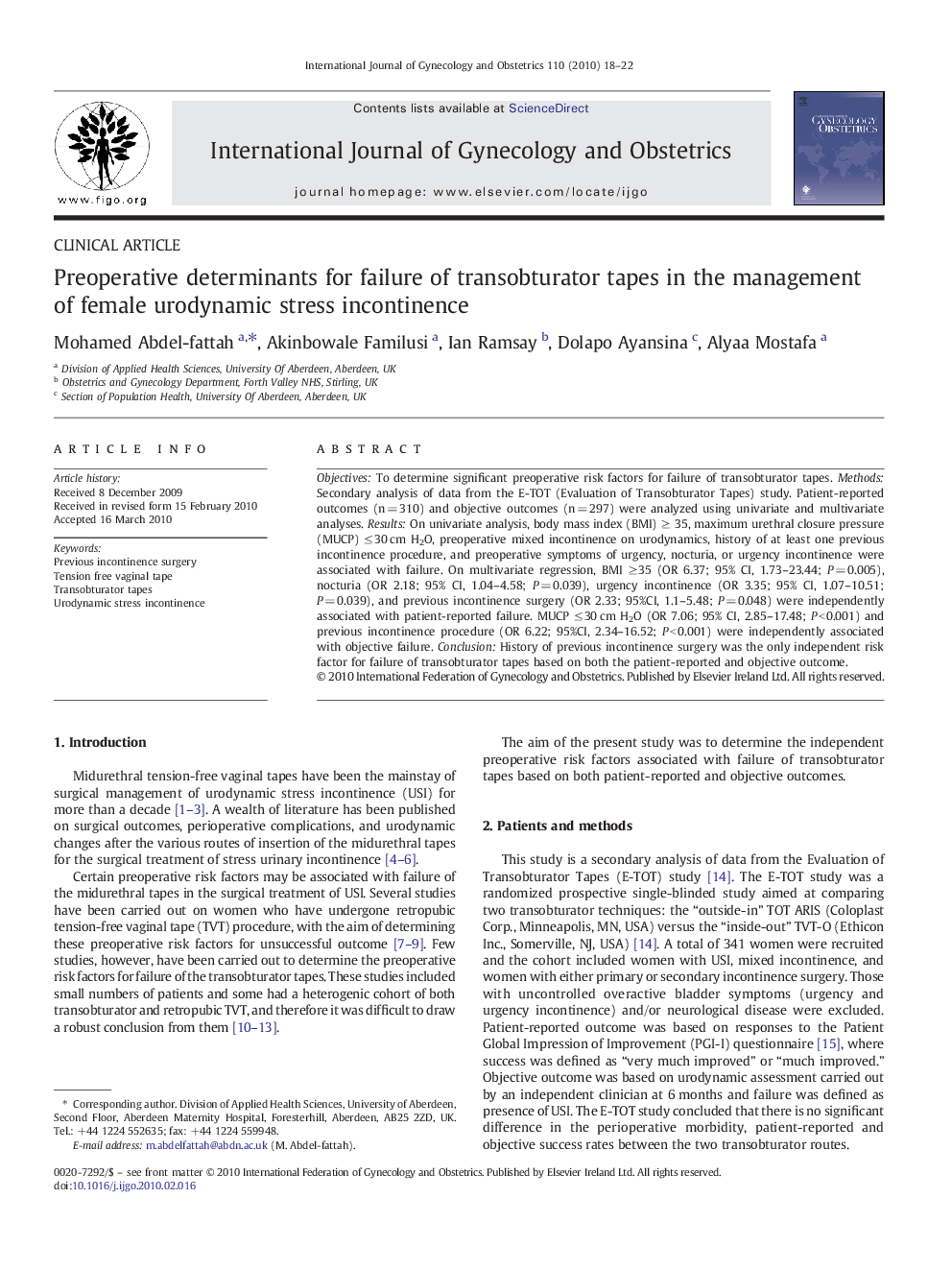| Article ID | Journal | Published Year | Pages | File Type |
|---|---|---|---|---|
| 3951567 | International Journal of Gynecology & Obstetrics | 2010 | 5 Pages |
ObjectivesTo determine significant preoperative risk factors for failure of transobturator tapes.MethodsSecondary analysis of data from the E-TOT (Evaluation of Transobturator Tapes) study. Patient-reported outcomes (n = 310) and objective outcomes (n = 297) were analyzed using univariate and multivariate analyses.ResultsOn univariate analysis, body mass index (BMI) ≥ 35, maximum urethral closure pressure (MUCP) ≤ 30 cm H2O, preoperative mixed incontinence on urodynamics, history of at least one previous incontinence procedure, and preoperative symptoms of urgency, nocturia, or urgency incontinence were associated with failure. On multivariate regression, BMI ≥ 35 (OR 6.37; 95% CI, 1.73–23.44; P = 0.005), nocturia (OR 2.18; 95% CI, 1.04–4.58; P = 0.039), urgency incontinence (OR 3.35; 95% CI, 1.07–10.51; P = 0.039), and previous incontinence surgery (OR 2.33; 95%CI, 1.1–5.48; P = 0.048) were independently associated with patient-reported failure. MUCP ≤ 30 cm H2O (OR 7.06; 95% CI, 2.85–17.48; P < 0.001) and previous incontinence procedure (OR 6.22; 95%CI, 2.34–16.52; P < 0.001) were independently associated with objective failure.ConclusionHistory of previous incontinence surgery was the only independent risk factor for failure of transobturator tapes based on both the patient-reported and objective outcome.
